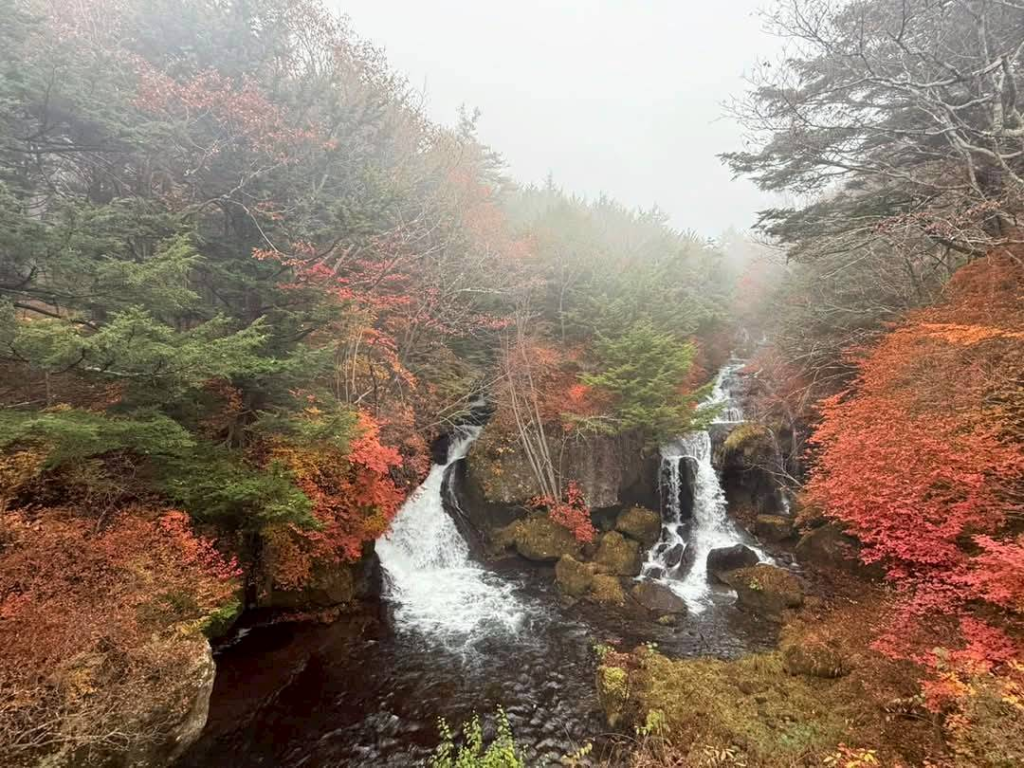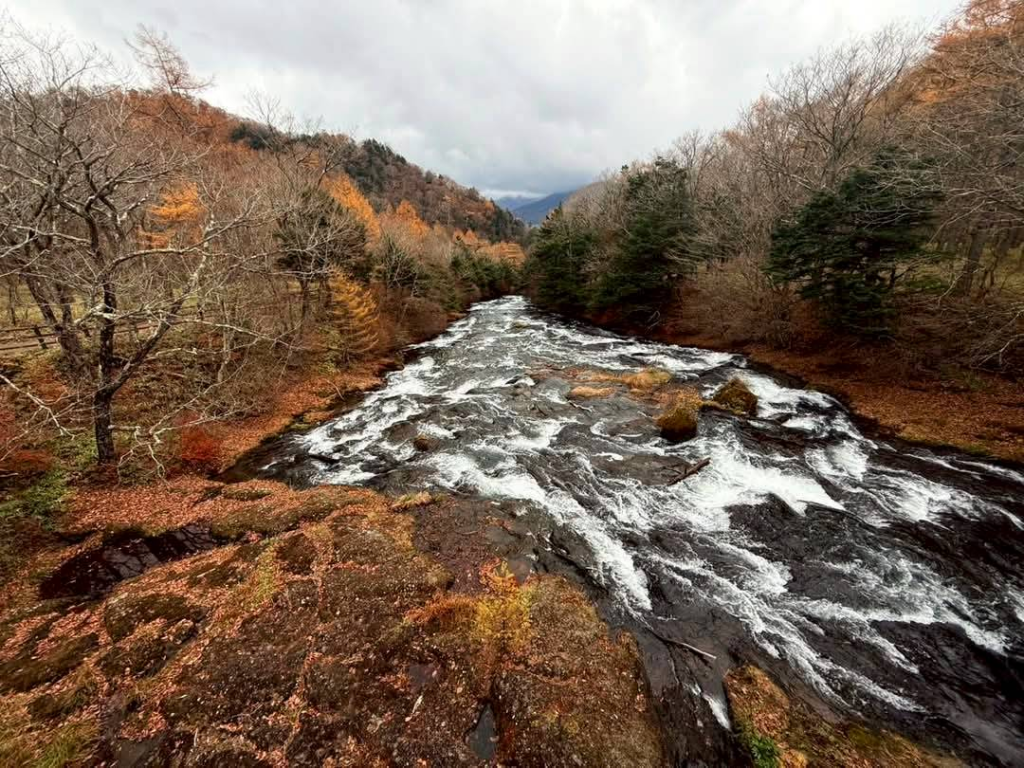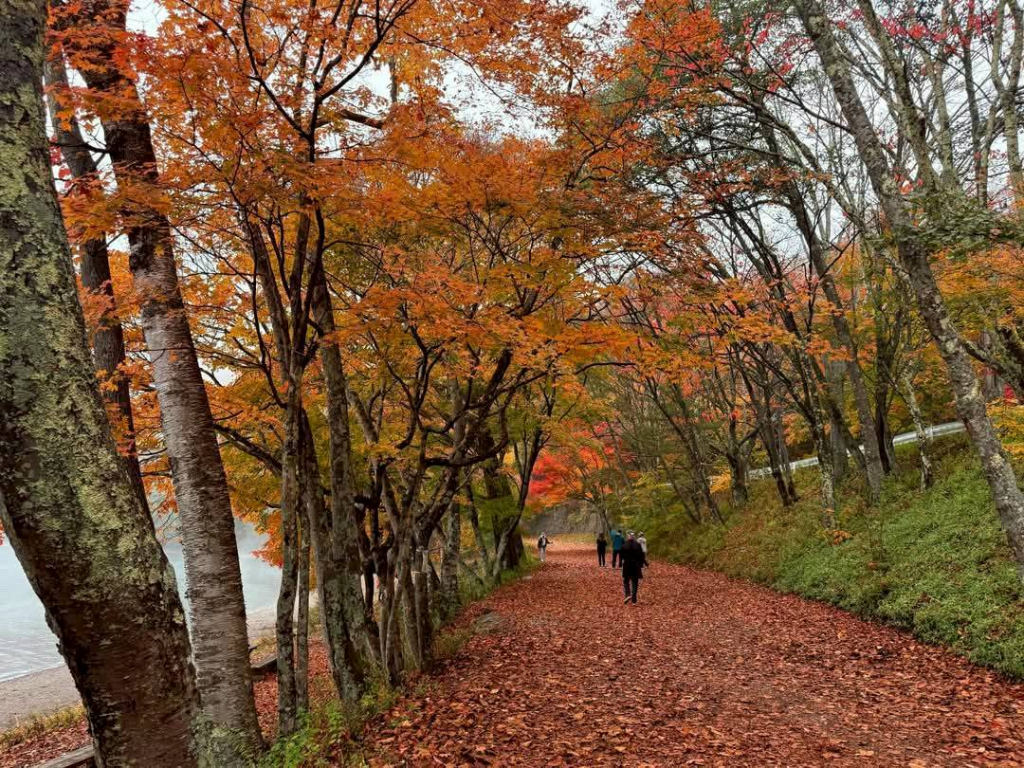[World Heritage Sites in Kanto]
[Nikko Toshogu Shrine]
[Yakushido Hall with the Singing Dragon]
[Yomeimon Gate]
[Nikko’s Two Shrines and One Temple World Heritage Site]
[Beyond Yomeimon is Ryugin Yakushido Hall, with Suryaprabha, Candraprabha, and the 12 Yaksha Generals]
[No Photography or Recording Allowed—Images Sourced Online]
Mr. Huang Guohua once mentioned in my mind,
The most interesting place in Japan is Nikko; this was my first impression of Nikko.
Mr. Huang Guohua authored: “A Place with Sunlight (Nikko)” and “Endless Sunlight (Nikko).”
Nikko is the top choice for excursions near Tokyo, perhaps because of its attractive name.
Nikko City (Japanese: 日光市/にっこうし Nikkō shi) is located in the northern part of the Kanto region, in northwestern Tochigi Prefecture, Japan. It is an international cultural and tourist city that combines mountains, lakes, waterfalls, and the scenic views of shrines and temples. Nearly 6 million domestic and international tourists visit each year. “The Shrines and Temples of Nikko” were registered as a UNESCO World Heritage Site in 1999 and are within Nikko National Park.
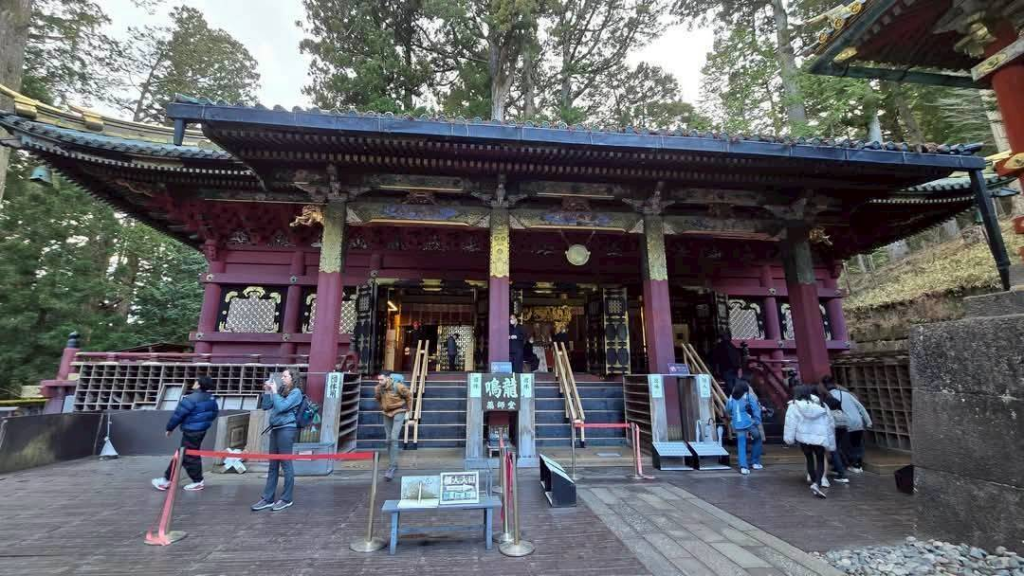
The iconic World Heritage site of Nikko is: The Two Shrines and One Temple of Nikko
They are: Toshogu Shrine, Futarasan Shrine, and Rinnoji Temple;
Toshogu is the Tokugawa family temple; Futarasan Shrine is a Shinto shrine but enshrines the Thousand-Armed Kannon.
In the era of feudal politics, the coexistence of Shinto and Buddhism at the Two Shrines and One Temple is rare. Among them, Rinnoji Temple is the oldest, established in 766 by Shodo Shonin.
[Yakushido Hall with the Singing Dragon]

Before departing, I did some research and deliberately searched for a place dedicated to the Medicine Buddha—and discovered there is a Yakushi Nyorai (Medicine Buddha) at Toshogu’s Yakushido Hall.
It was my first visit, and I was delighted not to miss the Singing Dragon Yakushido Hall.
The “Singing Dragon” is inside Nikko Toshogu, a World Heritage Site in northwest Tochigi Prefecture, painted on the “mirror ceiling” of the largest building within Toshogu—Yakushido Hall. The ceiling, made from 34 pieces of hinoki wood, features a massive dragon 6 meters wide and 15 meters long, appearing as if it might leap out at any moment. When you clap wooden blocks under the dragon’s head, the echo sounds like a dragon’s roar.
No photos are allowed inside. Staff guide Japanese and foreign visitors into separate areas, first explaining in Japanese, then in English for foreigners. Simply put, clapping in a specific area creates an echo called the “Singing Dragon”; elsewhere, it does not.
The experience was quite impressive—highly recommended!
At the Yakushido Hall, people pray for national peace and the elimination of disasters, which is precisely the Medicine Buddha’s vow.


Medicine Buddha Article
https://www.facebook.com/share/p/1YtVkTA4yo
Yomeimon, the iconic structure of Nikko Toshogu Shrine, is a two-story gate standing 11.1 meters high, 7 meters wide, and 4.4 meters deep. It is said to be named after the main gate of the Imperial Palace in Kyoto (Yomeimon). Concentrating the craftsmanship of early Edo period carvings, metal fittings, and colors, the gate’s gorgeous beauty is said to never bore, even after a full day of viewing, earning it the nickname “Higurashi-mon” (Gate of the Setting Sun).
Besides its dazzling gold foil, Yomeimon is also famous for its more than 500 wooden carvings depicting birds, animals, clouds, flowers, and traditional tales.
Yomeimon’s luxurious brilliance is why it’s also known as “Higurashi Go-mon” or “Higurashi-no-mon,” meaning a gate so captivating that you could gaze at it from morning to dusk and never tire of it.
[The Origin and Other Names of Nikko Toshogu’s Yomeimon]
The name Yomeimon at Nikko Toshogu comes from the Kyoto Imperial Palace.
The Kyoto Imperial Palace has twelve gates, and Yomeimon is named after the eastern gate, symbolizing the “Guardian Deity of the East Side of the Imperial Palace.”
Nikko Toshogu was first built in 1617 and officially named Toshogu in 1645.
Out of curiosity, I looked up information on the great Confucian Wang Yangming.
Ming Dynasty Great Confucian Wang Yangming
Wang Shouren (October 31, 1472 – January 9, 1529), childhood name Yun, courtesy name Bo’an, sobriquet Yangmingzi, is commonly known as Wang Yangming. He was from Yuyao County, Shaoxing Prefecture, Zhejiang (today’s Yuyao, Ningbo, Zhejiang). Wang Yangming was a major and influential thinker, philosopher, calligrapher, writer, statesman, military strategist, high-ranking official, educator, Confucian, Yangming scholar, and psychologist in the mid-Ming Dynasty, and one of the most significant Confucians in the Chinese cultural sphere. He served as Minister of War in Nanjing and Chief Imperial Censor, was ennobled as Marquis of Xinjian after military success, and posthumously honored as Marquis during the Longqing era. His posthumous title was Wencheng.
Yangming philosophy still has widespread influence in modern China. Xiong Shili, one of the founders of modern New Confucianism, and his disciple Mou Zongsan both inherited and developed Yangming’s teachings. Scholar Xu Fancheng, after decades of research on Chinese, Indian, and European philosophy, highly praised Lu-Wang’s School of Mind in his later years (see “Lu-Wang Studies” in the first volume of the “Collected Works of Xu Fancheng,” Shanghai Sanlian Publishing House). Contemporary scholar Jiang Qing also praises Wang Yangming (see the book “Political Confucianism”). Chiang Kai-shek was a devotee of Wang Yangming’s philosophy and renamed Taipei’s Grass Mountain as Yangmingshan for this reason.
Japanese Yangming studies became one of the main schools of thought influencing Japan’s modernization, particularly the Meiji Restoration and the overthrow of the Tokugawa shogunate.
https://zh.m.wikipedia.org/zh-tw/%E7%8E%8B%E9%99%BD%E6%98%8E
Online sources suggest that the stories about Yomeimon don’t seem related to Wang Yangming, likely because most sources are in Japanese,
But in reality, there’s a strong connection. Wang Yangming had a profound influence on Japan’s modernization, and this is a prime example.
The Two Dragons of the Raira School:
On both sides of Yomeimon’s corridor ceiling are dragon paintings. The north side features a pair of “ascending dragons,” while the south side features a pair of “descending dragons.”
The ascending dragons are also called “Eight-Directional Gaze Dragons,” while the descending dragons are known as “Four-Directional Gaze Dragons.” These are said to be masterpieces by Raira Tanyu and are designated national treasures.
http://www.ryuss2.pvsa.mmrs.jp/ryu-iware/nikko-2021/tenjo.htm
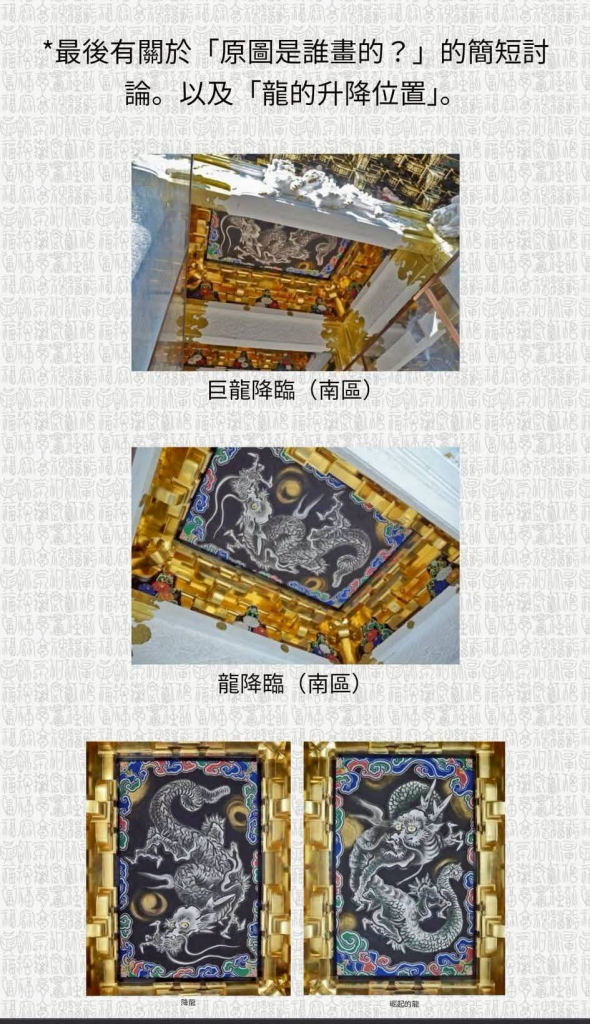
The “Way of Polaris” refers to the stone path from Yomeimon to the torii, which directly faces the North Star and is said to be the most powerful energy spot.
Toshogu’s Yomeimon Gate is related to the Big Dipper and the North Star.
In Onmyodo (Japanese Yin-Yang cosmology), the North Star is regarded as being at the center of the heavens, governing all the other stars.
The North Star at Nikko Toshogu is directly above Yomeimon Gate,
symbolizing that the world revolves around Nikko Toshogu Shrine.
https://zhuanlan.zhihu.com/p/341103699
Source: Internet
Onmyodo (Japanese: 陰陽道 Onmyōdō/On’yōdō/In’yōdō) is a Japanese system of esoteric cosmology, a mixture of the Wu Xing (Five Elements) theory, divination, ancient astronomy, and calendrical knowledge, developed as part of Shinto. Practitioners of Onmyodo are called Onmyoji.
https://tabiiro.jp/kankou/article/nikko-toshogu-yomeimon
Japanese Onmyoji are quite similar to traditional Chinese Taoist priests. Children first experienced the goma fire ritual here, wishing for everyone’s wishes to come true.
After leaving Nikko, I realized that Lake Chuzenji, higher up from the Two Shrines and One Temple, is even more beautiful,
I’ll save that for next time, because Nikko’s wonders are truly endless!
